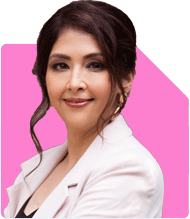Ramalingam Kalirajan |10902 Answers |Ask -Follow
Mutual Funds, Financial Planning Expert - Answered on May 29, 2024
He has an MBA in finance from the University of Madras and is a certified financial planner.
He is the director and chief financial planner at Holistic Investment, a Chennai-based firm that offers financial planning and wealth management advice.... more

I am 40 years old and looking to create wealth of 60lakhs for my daughters education in next 10years. Can you suggest, any investment plan, to acheive this target. As of now, i am investing in following funds: 1. "SBI Magnum Tax Gain Scheme - Regular Plan - Growth ELSS" - 2000 2. "SBI Blue Chip Fund - Direct Plan - Growth" - 500 3. "UTI Long Term Equity Fund (Tax-Saving)- Direct Growth- ELSS" 3000 4. "UTI Hybrid Equity Fund - Direct Growth Plan" - 1000 5. "UTI Banking PSU Debt Fund" - 2000 6. "ICICI Prudential Value Discovery Fund DIVERSIFIED EQUITY" - 500 7. "DSP blackrock" - 2500 8. "Mirae Asset Emerging BlueChip Fund- Direct Plan - GrowthSmall & MID Cap" - 1000 9. HDFC Top 100 Funds - 3500 Total : 16000 per month. My Investment horizon are for 15 to 20 years. Let me know is this a good fund to continue and should I hold this fund or release it? Also let me know some good fund for 10 to 15 years where I can invest?
Assessing Your Current Mutual Fund Portfolio
Your portfolio includes a variety of funds: equity, hybrid, and debt. This diversification is a good strategy. However, fine-tuning can help you achieve your specific goal more effectively.
Equity Funds
Equity funds are crucial for long-term growth. They offer higher returns compared to other asset classes. Your portfolio has a mix of large-cap, mid-cap, and diversified equity funds. This mix is suitable for capturing market growth.
Tax-Saving (ELSS) Funds
ELSS funds provide tax benefits under Section 80C. They also offer equity exposure, which is beneficial for long-term goals. Your investments in ELSS funds are a good strategy for tax-efficient growth.
Hybrid Funds
Hybrid funds offer a balance of equity and debt. They provide stability and moderate returns. This is beneficial for risk management.
Debt Funds
Debt funds add stability to your portfolio. They are less volatile and provide steady returns. Including debt funds is wise for balancing overall risk.
Evaluating Direct and Regular Funds
Disadvantages of Direct Funds
Direct funds have lower expense ratios but lack professional guidance. Certified Financial Planners (CFPs) provide valuable insights and strategies tailored to your needs. Investing through a CFP ensures you make informed decisions.
Benefits of Regular Funds Through MFD
Regular funds, managed by Mutual Fund Distributors (MFD) with CFP credentials, offer expert advice. They help you navigate market fluctuations and optimize your portfolio for better returns.
Optimizing Your Portfolio for Rs 60 Lakhs in 10 Years
To achieve Rs 60 lakhs in 10 years, consider these adjustments and additions:
Increase Equity Exposure
Allocate more to equity funds for higher growth potential. Equity funds outperform other asset classes over the long term. Increase your investment in diversified and large-cap equity funds.
Focus on Actively Managed Funds
Actively managed funds adapt to market changes. They aim to outperform benchmarks and provide higher returns. Choose funds with strong track records and experienced fund managers.
Systematic Investment Plans (SIPs)
Continue with SIPs to maintain discipline and average out costs. SIPs are effective for long-term wealth creation and mitigating market volatility.
Lump Sum Investments
If you have a lump sum to invest, use Systematic Transfer Plans (STPs). STPs gradually transfer funds into equity, reducing timing risk and averaging out purchase costs.
Diversify Across Asset Classes
While equity should dominate, maintain some exposure to hybrid and debt funds. This ensures a balanced risk-return profile and provides stability.
Regular Monitoring and Rebalancing
Review your portfolio regularly. Rebalance it to maintain alignment with your goals and risk tolerance. This ensures your investments stay on track.
Suggested Investment Plan
Based on your current investments and the goal of Rs 60 lakhs, consider the following approach:
Equity Funds
Increase your SIPs in diversified and large-cap equity funds. These funds offer higher growth potential and are less volatile than small-cap funds.
Hybrid Funds
Maintain or slightly increase your investment in hybrid funds. They offer stability and moderate returns, balancing your overall portfolio risk.
Debt Funds
Keep a portion in debt funds for safety and steady returns. This can act as a buffer against market downturns.
ELSS Funds
Continue investing in ELSS funds for tax benefits and equity exposure. Ensure these investments align with your overall asset allocation strategy.
Professional Guidance
Seek regular advice from a Certified Financial Planner (CFP). They can provide tailored strategies and help optimize your portfolio based on market conditions and your goals.
Conclusion
Your current portfolio is diversified and suitable for long-term growth. By increasing your equity exposure and focusing on actively managed funds, you can achieve your goal of Rs 60 lakhs in 10 years. Regular monitoring and professional guidance will keep your investments on track.
Best Regards,
K. Ramalingam, MBA, CFP,
Chief Financial Planner,
www.holisticinvestment.in
You may like to see similar questions and answers below
Ramalingam Kalirajan |10902 Answers |Ask -Follow
Mutual Funds, Financial Planning Expert - Answered on May 07, 2024
Ramalingam Kalirajan |10902 Answers |Ask -Follow
Mutual Funds, Financial Planning Expert - Answered on May 02, 2024
Ramalingam Kalirajan |10902 Answers |Ask -Follow
Mutual Funds, Financial Planning Expert - Answered on Jul 25, 2024
Ramalingam Kalirajan |10902 Answers |Ask -Follow
Mutual Funds, Financial Planning Expert - Answered on Jul 29, 2025
Samraat Jadhav |2514 Answers |Ask -Follow
Stock Market Expert - Answered on Dec 18, 2025
Reetika Sharma |432 Answers |Ask -Follow
Financial Planner, MF and Insurance Expert - Answered on Dec 18, 2025
Reetika Sharma |432 Answers |Ask -Follow
Financial Planner, MF and Insurance Expert - Answered on Dec 18, 2025
Reetika Sharma |432 Answers |Ask -Follow
Financial Planner, MF and Insurance Expert - Answered on Dec 18, 2025
Samraat Jadhav |2514 Answers |Ask -Follow
Stock Market Expert - Answered on Dec 18, 2025

Kanchan Rai |648 Answers |Ask -Follow
Relationships Expert, Mind Coach - Answered on Dec 18, 2025
Kanchan Rai |648 Answers |Ask -Follow
Relationships Expert, Mind Coach - Answered on Dec 18, 2025
Anu Krishna |1754 Answers |Ask -Follow
Relationships Expert, Mind Coach - Answered on Dec 18, 2025
Anu Krishna |1754 Answers |Ask -Follow
Relationships Expert, Mind Coach - Answered on Dec 18, 2025
Anu Krishna |1754 Answers |Ask -Follow
Relationships Expert, Mind Coach - Answered on Dec 18, 2025























